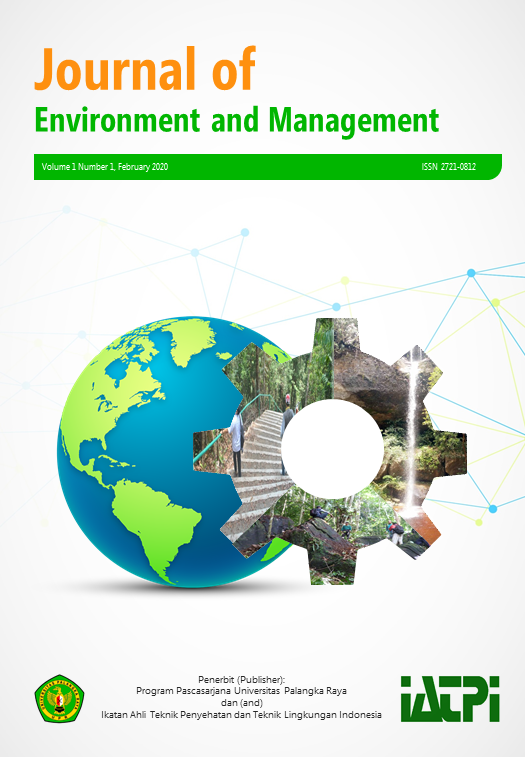Pengembangan Kawasan Wisata Berbasis Masyarakat di Taman Nasional Sebangau Provinsi Kalimantan Tengah (Studi Kasus di Kelurahan Kereng Bangkirai)
DOI:
https://doi.org/10.37304/jem.v1i1.1201Keywords:
Potential, Strategy, Development, Tahura, SWOTAbstract
This study aims to determine the strategy for the development of community-based tourism areas in Sebangau National Park, Central Kalimantan Province. Descriptive qualitative analysis derived from the SWOT method was applied as an analytical tool. Data were collected through observation, interviews, questionnaires and documentation. Correspondents consist of the local tourism office, Sebangau National Park office, Sebangau district official, Kereng Bangkirai officials, community leaders, local communities and visitors. The results show that, first, the strategy for the development of Sebangau National Park tourist area includes building infrastructure that supports tourism development, and cooperating with the private sector and the government to invest. Secondly, strategies based on SWOT analysis obtained alternative ST (Strength and Threats) strategies. These are, first, to utilize the strength and to pay attention to threats in increasing visits to the Park. Secondly, considering that the Park has potentials that are still original and beautiful and paying attention to threats. Lastly, to develop other tourist areas that increase competition.
Downloads
Published
Versions
- 2020-02-28 (2)
- 2020-02-28 (1)






